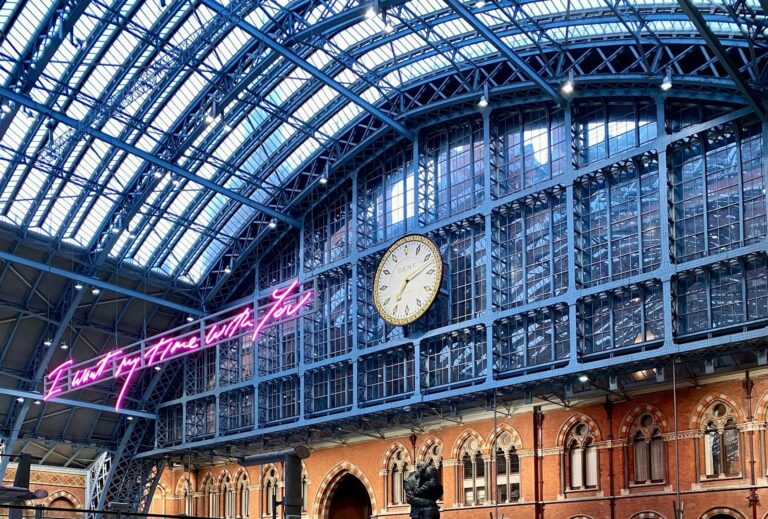London, a bustling metropolis renowned for its rich history, cultural diversity, and iconic landmarks, is also famous for its intricate and extensive transport network. The London Transport System, comprising a variety of modes including buses, trains, the Underground, trams, and river services, plays a pivotal role in connecting millions of commuters and tourists to their destinations every day. In this article, we’ll delve into the details of each mode of transportation, exploring their history, efficiency, and significance in keeping the city moving.
The London Underground: A Network of Subterranean Journeys
The London Underground, affectionately known as the Tube, is one of the oldest and most iconic underground railway systems in the world. Established in 1863, the Tube serves as the backbone of London’s transport system, carrying millions of passengers across its extensive network of 11 lines and 270 stations. From the historic Baker Street to the vibrant Leicester Square, each station tells a story of the city’s evolution and growth.

The Underground’s efficiency and reliability make it a preferred mode of transportation for commuters and tourists alike. With trains running at frequent intervals, passengers can navigate the city with ease, avoiding the notorious traffic congestion on the surface. Additionally, recent modernization efforts, including the introduction of contactless payment systems and Wi-Fi connectivity in stations, have enhanced the overall commuting experience.
Buses: The Lifeline of London's Streets
In addition to the Underground, London’s iconic red buses crisscross the city’s streets, providing vital connections to areas not served by the Tube. The red double-decker buses have become synonymous with London’s identity, offering both a convenient mode of transport and a scenic tour of the city’s landmarks. With over 8,600 buses operating on more than 700 routes, the bus network is integral to keeping Londoners connected to their workplaces, schools, and leisure destinations.

The introduction of low-emission buses and dedicated bus lanes has significantly improved the environmental sustainability and efficiency of London’s bus network. Moreover, initiatives such as the Hopper fare, which allows passengers to make unlimited bus transfers within one hour at no extra cost, have made bus travel more affordable and accessible to all.
Trains: Connecting London to the Wider World
London’s extensive rail network extends far beyond the confines of the city, linking it to major cities and towns across the United Kingdom. From the iconic red-brick facade of King’s Cross Station to the historic grandeur of Paddington Station, London’s railway terminals serve as gateways to domestic and international travel. The National Rail services, operated by various companies including Network Rail, Southeastern, and Thameslink, offer a seamless connection between London and destinations such as Brighton, Cambridge, and Edinburgh.

Moreover, the Eurostar service, which operates from St Pancras International Station, provides high-speed rail connections to continental Europe, including Paris, Brussels, and Amsterdam. This international link not only facilitates tourism and business travel but also strengthens London’s position as a global transportation hub.
Trams and River Services: Alternative Modes of Transport
While the Underground, buses, and trains form the backbone of London’s transport system, alternative modes such as trams and river services offer unique travel experiences for commuters and tourists alike. The Tramlink network, serving areas in South London, provides efficient connections to places like Wimbledon, Croydon, and Beckenham, offering a comfortable and environmentally friendly alternative to traditional bus and rail services.

Additionally, London’s historic waterways are navigated by various river services, including the Thames Clippers and City Cruises. These services not only offer scenic views of iconic landmarks such as the Tower Bridge and the Houses of Parliament but also serve as practical commuter routes, connecting riverside communities to central London.
Challenges and Future Developments
Despite its efficiency and connectivity, the London Transport System faces challenges such as overcrowding, maintenance backlog, and the need for infrastructure modernization. The growing population of London, coupled with increasing demand for public transport, necessitates continuous investment and innovation to ensure the system remains sustainable and resilient in the face of future challenges.
To address these issues, Transport for London (TfL), the authority responsible for managing London’s transport network, has outlined ambitious plans for the system’s expansion and improvement. Projects such as the Elizabeth Line (Crossrail), which will connect east and west London with faster and more frequent services, and the expansion of the bus network in outer London, aim to enhance connectivity and accessibility for residents and visitors alike.
Moreover, initiatives to promote active travel, such as cycling and walking, alongside the expansion of electric vehicle charging infrastructure, are essential components of London’s long-term transport strategy. By prioritizing sustainability and inclusivity, London aims to maintain its status as a world-class city with a transport system that meets the needs of its diverse population while preserving the environment for future generations.
Conclusion
While the Underground, buses, and trains form the backbone of London’s transport system, alternative modes such as trams and river services offer unique travel experiences for commuters and tourists alike. The Tramlink network, serving areas in South London, provides efficient connections to places like Wimbledon, Croydon, and Beckenham, offering a comfortable and environmentally friendly alternative to traditional bus and rail services.

The London Transport System, with its diverse modes of transportation and iconic infrastructure, serves as a lifeline for millions of people navigating the bustling streets of the city. From the historic tunnels of the Underground to the bustling terminals of the railway stations, each aspect of the system contributes to the vibrancy and connectivity of London. As the city continues to evolve and grow, investments in infrastructure, technology, and sustainability will be essential to ensure that the London Transport System remains a model of efficiency and innovation for cities around the world.

